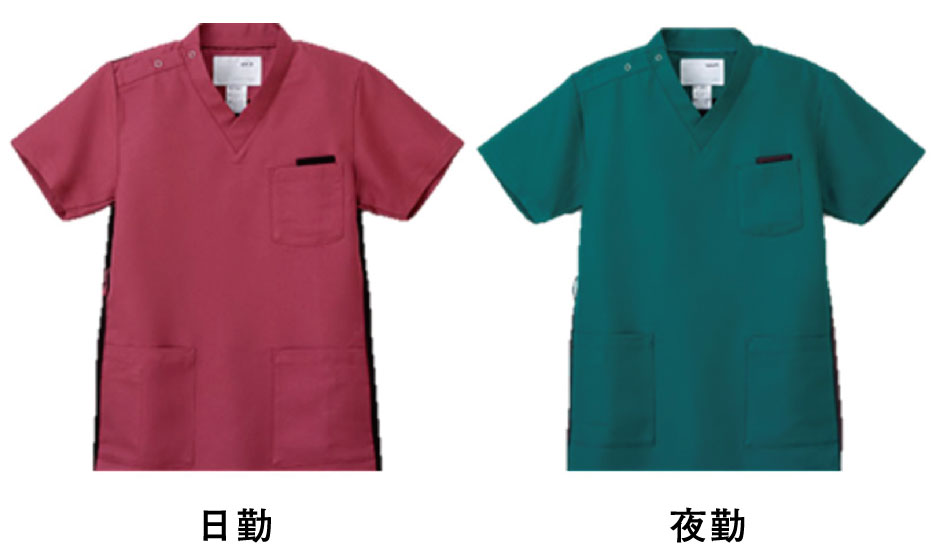ASOURCE®TIMES

熊本地域医療センター 元院長、医師
長崎国際大学 健康管理学部 健康栄養学科 教授
廣田 昌彦
昭和58年熊本大学医学部卒業。同年熊本大学第二外科入局。研修医、大学院を経て、米国ネブラスカ大学エプリーがん研究所留学。平成17年熊本大学消化器外科助教授。平成19年同准教授。平成23年熊本地域医療センター院長。令和4年より長崎国際大学健康管理学部健康栄養学科教授。現在に至る。
日勤と夜勤でユニフォームの色を変える、看護師が複数の部署で働ける仕組みを導入することで、看護師の残業時間や離職率を減少させた熊本地域医療センター。ユニフォーム2色制を考案し、看護師の働き方改革を後押ししてきた元院長で外科医の廣田昌彦先生に業務改革の推進について伺います。

看護師のユニフォーム2色制を実施したのは、2013年、病院長に就任してからです。以前から、外科医として働くなかで、勤務中の看護師と勤務が終わった看護師が一目で区別できると指示が出しやすいはずだと考えていました。ちょうど看護師のユニフォームを替える機会があり、日勤と夜勤を色分けしてはどうかと提案しました。看護部長からの賛同や、事務部門の交渉を経てユニフォームをリースする形で2色制が始まりました。
同時に院内掲示でこの制度を広報しました。例えば、すでに業務を終えた看護師が電話を取らないとき、患者さんにさぼっていると思われるかもしれませんので、患者さんや外部の人にもこの制度を知ってもらう必要がありました。
日勤と夜勤は交代時間の20分前出勤に変更し、後には長日勤制度も導入しました。それによって引き継ぎ時間を確保することができました。引き継ぎは2色のユニフォームが混ざる時間で、一目で勤務交代前だとわかります。
さらに、院歌を毎日終業1時間前に院内放送で流すことにしました。当院には学校の校歌と同じように院歌があります。それを流すことでスタッフが勤務時間の終了を意識して残務をこなす合図になり、患者さんも勤務交代時間が近づいているとわかります。
看護師のユニフォーム2色制には、いろいろな反響がありました。看護師からは、「仕事にメリハリができた」「同僚が勤務時間内か超過しているのかがすぐわかる」「声をかける人を探すのが楽になった」などの声が挙がり、「残務の引き受けや委譲が楽になった」と職場内での協力や連携が進みました。個人としては、「業務を定刻で終了できるよう時間管理をするようになった」「業務を調整し、残務内容を吟味する」という意識の変化が起こりました。
一方、医師にとっては「日勤と夜勤、責任者や担当者が探しやすくなった」のがよかったようです。患者さんの夜間の状況を誰に尋ねるべきかが明確になり、夜勤明けの看護師に指示を出すこともなくなりました。遅くまで残っている看護師には帰宅を促すようにもなっています。

とはいえ、ユニフォームの色を変えただけで業務が減るわけではなく、看護師の急な欠勤、患者さんの急変や緊急入院など業務が急に過多になることにも備えが必要です。そこで、ちょうど並行して進められていた複数の業務をこなせる“ポリバレントナース”の育成と活用が役立ちました。“ポリバレント”とは、英語で「多くの働きをこなす」という意味です。私は2018年のサッカーワールドカップロシア大会の前に日本男子チームの西野朗監督の話からこの言葉を知り、複数の部署で働ける看護師の育成を目標としました。例えば、外来業務がこなせる病棟ナース、透視室でドレーン交換を介助できる手術室ナース、内視鏡の介助ができる病棟ナース、心臓カテーテル介助ができる外来ナース、といった具合です。そのために薬品や備品の置き場所の共通化、部門ごとのしきたりの見直しも行いました。
そして、数年前から看護師の業務のシャッフルが始まりました。各部署ではホワイトボードなどで患者さんの状態や看護師の業務の進行が一覧できるようになっており、手が足りない部署に別の部署の看護師を助っ人として送れるよう、看護師長が差配します。また、応援要請を出すこともできます。このような看護師の業務シャッフルは福岡県の飯塚病院などですでに実施されていましたので、現地で取組みを学び、それをモディファイして実践しました。
こうした取組みによって、看護部門の業務が効率化して残業時間が減り、離職率低下につながりました。1人1人の看護師にとっては仕事がマンネリでなくなり、やり甲斐や成長につながったのでしょう。
当院は診療科が15、病床は287床と規模が小さい病院で、院内の移動距離も多くなく、経営陣はもちろんスタッフのほとんどは顔見知りです。ですから、新しい取組みは浸透しやすい。大きい病院では一部の組織から導入するなどの工夫が必要かもしれませんね。
今、自分自身が定年を迎え、定年後の医師を正規雇用あるいはパートタイムで雇用する“リベロドクター”として働いています。“リベロ”はイタリア語で「自由」の意味で、スポーツでは守備専門あるいは役割を固定せずに動き回る選手を指します。例えば、外科医は主に手術室で過ごしているため、病棟に戻った患者さんのリハビリの指示や薬の処方がどうしても遅くなってしまいます。院内での外科医の動きと業務を知っている定年後の外科医が病棟にいれば、これらの業務や看護師の特定行為研修のサポートなどに役立つと思います。